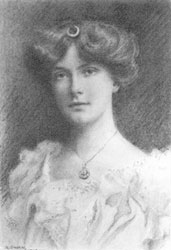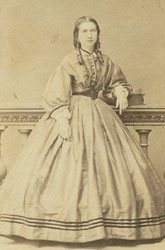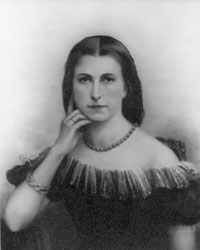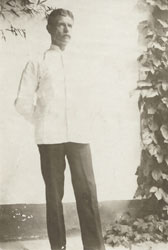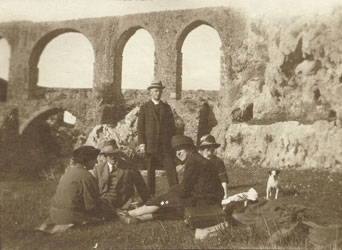Rose Marie Caporal | Alessandro Pannuti | Ft Joe Buttigieg | Mary Lemma | Antoine ‘Toto’ Karakulak | Willie Buttigieg | Erika Lochner Hess | Maria Innes Filipuci | Catherine Filipuci | Harry Charnaud | Alfred A. Simes | Padre Stefano Negro | Giuseppe Herve Arcas | Filipu Faruggia | Mete Göktuğ | Graham Lee | Valerie Neild | Yolande Whittall | Robert Wilson | Osman Streater | Edward de Jongh | Daphne Manussis | Cynthia Hill | Chris Seaton | Andrew Mango | Robert C. Baker | Duncan Wallace QC | Dr Redvers ‘Red’ Cecil Warren | Nikolaos Karavias | Marianne Barker | Ümit Eser | Helen Lawrence | Alison Tubini Miner | Katherine Creon | Giovanni Scognamillo | Hakkı Sabancalı | Joyce Cully | Jeffrey Tucker | Yusuf Osman | Willem Daniels | Wendy Hilda James | Charles Blyth Holton | Andrew Malleson | Alex Baltazzi | Lorin Washburn | Tom Rees | Charlie Sarell | Müsemma Sabancıoğlu | Marie Anne Marandet | Hümeyra Birol Akkurt | Alain Giraud | Rev. Francis ‘Patrick’ Ashe | Fabio Tito | Pelin Böke | Antonio Cambi | Enrico Giustiniani | Chas Hill | Arthur ‘Mike’ Waring Roberts III | Angela Fry | Nadia Giraud | Roland Richichi | Joseph Murat | George Poulimenos | Bayne MacDougall | Mercia Mason-Fudim née Arcas | Eda Kaçar Özmutaf | Quentin Compton-Bishop | Elizabeth Knight | Charles F. Wilkinson | Antony Wynn | Anna Laysa Di Lernia | Pierino & Iolanda Braggiotti | Philip Mansel | Bernard d’Andria | Achilleas Chatziconstantinou | Enrichetta Micaleff | Enrico Aliotti Snr. | Patrick Grigsby | Anna Maria and Rinaldo Russo | Mehmet Yüce | Wallis Kidd | Jean-Pierre Giraud | Osman Öndeş | Jean François d’Andria | Betty McKernan | Frederick de Cramer | Emilio Levante | Jeanne Glennon LeComte | Jane Spooner | Richard Seivers | Frances Clegg
My mother, Yolande Christine Irene Wilson, was born in Smyrna in 1904
and spent considerable time there as a child. Her mother, Alma Marie
Le Bouvier, was the daughter of Louis Charles Le Bouvier. The Le Bouviers
were French Huguenots who emigrated from Rouen via Jersey. Rev. Louis
Charles Le Bouvier was the second of four children of Louis Edouard
Le Bouvier and Elizabeth Charlotte Levez, where Louis Edouard was a school-teacher
at Little Appley College, Ryde, Isle of Wight. Born in 1860, Louis Charles
was educated at his father’s school and subsequently sent to theological
college in Lausanne, Switzerland, which he left as a clerk in holy orders.
Alma’s brother (also Louis Le Bouvier) was, incidentally, the Jerusalem
manager for the Ottoman
Bank.
Yolande’s father, Henry Christopher Bruce Wilson, was also born in Smyrna, in 1875. His mother was Maria Christine Gout, the eldest daughter of James Gout1 and Cleopatra Boskoff2. The Wilson surname does not occur in anything I have read about Smyrna, but family papers indicate that Maria made a number of ill-advised investments in mines in that part of Turkey as well as in the railways.
Rev. Louis Le Bouvier married Jane Leonora Alice Heaphy in London, in 1882. At about the same time, he emigrated to Smyrna to take up the post of chaplain to the Dutch consul. Louis and Jane’s two children were born into Smyrna’s Levantine community: Louis Richard Albert Le Bouvier in 1882, and Alma Marie Le Bouvier in 1884.
The male side of the descent from the Rev. Louis Le Bouvier died out with the second subsequent generation. George, Louis’ last surviving grandson, died in 1996. A fascinating man full of stories, wit and intellect, he was a medical doctor and, until his brother’s premature death, a research scientist at Yale University. He would have loved to read Donald Simpson’s history of the Smyrna church, but he missed finding it on his visit there in 1991. I have his photo of the front of the Dutch church with Geoff Evans (Anglican chaplain at the time) on the step, but he did not get inside and neither did I. His letters to us were spiced with highlights in French and Greek. I once asked him how many languages he spoke and, keeping track of the answer on my fingers, came up with 13. Neither George, nor his only brother John, had any children.
As a British subject in Turkey, Le Bouvier was interned with many others for the duration of WWI, an event that strengthened his links to the English community. Otherwise, he remained at his post until 1922, officiating at the Dutch reformed church and travelling occasionally as was the custom. In England at the time of the 1922 fire, he returned immediately to hold services in the only church remaining relatively intact, the Anglican church of St. John, which lies within the northern part of Smyrna untouched by the fire. St. John was at that time a sub-church of the Anglican parish of Bournabat, under the supervision of the Bishop of Gibraltar. Arriving in October, 1922, Louis was the only Christian priest in Smyra during the period shortly after the fire. The St. John’s congregation both liked him and wished to retain him as their minister, but a request to the Bishop failed on the matter of Le Bouvier’s religious training and background and in July, 1924 the Bishop appointed the Rev. Robert Ashe to look after the Anglican communities.
On August 23, 1924 Louis Le Bouvier died of a stroke in the rectory at St. John before his position there could be clarified. His death created a small mystery, as two tombstones still exist, both of which effectively say, “Here lies Louis Le Bouvier”. Both, in French, show the same dates. The first, at the cemetery in Bournabat, is for Louis Lewis Le Bouvier. Perhaps this marker is English in origin, with “Lewis” being the Anglicization of his first name. As St. John did not have a cemetery of its own, it it would have been reasonable to send the body to Bournabat for burial. The second marker, for Louis Charles Le Bouvier, is in the small cemetery adjoining the old Dutch Church in the heart of Smyrna, where, perhaps, his body was reburied by his former parishioners. It seems unlikely today that we will ever know the real story.
In addition to his religious duties, Rev. Le Bouvier was a special correspondent of the London Times, whose archives contain his letters about trade and the status of the Levantine community within the Ottoman Empire. For reasons probably now lost to time, he was awarded the Order of Medjidieh by the Sultan, the Order of the Red Eagle, Fourth Class (Prussia) and was made a Knight of the Order of Orange Nassau (Netherlands). His obituary was recorded in the Times, September 3, 1924.
From the London Times, Sep.03, 1924; pg14.
A correspondent at Smyrna writes of the Rev. Louis Le Bouvier, whose death was announced in The Times yesterday:-
Mr. Le Bouvier, who was beloved by everyone of all denominations or nationality, had been a resident in Smyrna for the past 43 years, and had for a long time held the post of chaplain to the Dutch Consulate. He had been chaplain in charge of the English churches of Smyrna, Bournabat, and Boudja, and had been a tower of strength to the whole of the British community, particularly so during the Great War, when he, together with a large number of British, was interned. Within the past month he had been asked to take charge of the Smyrna English Church for at least a year longer, and the application for his licence is now on its way to the Bishop of Gibraltar. He was away from Smyrna when the evacuation of the Greeks took place in September, 1922, but with the grit and courage of the true English gentleman that he was, he hurried back as soon as possible from his leave, arriving here early in October. To the few British who remained after the general evacuation of the British colony he was of considerable help, and cheered them up as no one else could have done during the dark and anxious days when it appeared they might have to suffer and expect no help from the British Government. After things had cleared he received recognition of his good work in the form of a personal letter of thanks from Lord Curzon. For a long time he was a special correspondent of the Times, and was a member of many local committees, from which his presence will be sadly missed. The funeral and interment services were attended by the British Consul-General and Consular staff, the Dutch Consul-General and his staff, and by representative Turkish gentlemen.
An important piece of writing is a diary kept by the donor’s mother when she was looking after my own mother, “Yolande”, and her sister, “Baby”, giving a colourful account of life in Smryna in 1910-11 - view.
To view the Alsancak Dutch cemetery records, click here, and to view photos of this cemetery, click here:
Notes:
1. Online archives list James Gout as a merchant of Malta (almost certainly not his original home) who married a Christina Fercken (a Dutch Levantine name), of Smyrna, on 4th January 1813. The Gout family does seem a bit elusive. There’s another descendent of James Gout and Cleopatra Boskoff right here in Victoria, where I live. We have been in contact with Peter Gout, who lives in Northamptonshire. He’s descended from Gouts who stayed in England, and his story of the family’s origins is that they came to England from France in 1710. We’ve not been sure it was the same family Gout because he hadn’t been able to go back past 1814, and I see the Cercle du Levant website also saying the Gout’s origin was Swiss.
2. The Boskoffs might have been Russian but I’ve wondered from time to time why her name wasn’t Boskova, as that would seem to be the Russian tradition for naming girls. Possibly her parents were not Russian by that time. Any hope we have of tracing her origin will depend on others; there seem to be a lot of Boskoffs in the USA.
3- It appears that the Le Bouvier / Wilson line are distantly related to Edward III, the 14th century monarch of England, as revealed in the 1994 published genealogical book ‘The Plantagenet Roll of the Blood Royal’, p. 622 where amongst other details the marriage of Henry Christopher Bruce Wilson and Alma Marie Le Bouvier, the generation above and below this union - formerly visible here at google books:
Louis Le Bouvier’s name is also mentioned in passing in the book ‘Through the Legation Window 1876-1926: Four Essays on Dutch, Dutch-Indian and Ottoman History by Jan Schmidt (Pihans, 68) 1992, 250 p., ill. ISBN 90-6258-068-8’ - info.
 Submission date 2005-8
Submission date 2005-8
|
|
|
Yolande’s father, Henry Christopher Bruce Wilson, was also born in Smyrna, in 1875. His mother was Maria Christine Gout, the eldest daughter of James Gout1 and Cleopatra Boskoff2. The Wilson surname does not occur in anything I have read about Smyrna, but family papers indicate that Maria made a number of ill-advised investments in mines in that part of Turkey as well as in the railways.
|
|
Rev. Louis Le Bouvier married Jane Leonora Alice Heaphy in London, in 1882. At about the same time, he emigrated to Smyrna to take up the post of chaplain to the Dutch consul. Louis and Jane’s two children were born into Smyrna’s Levantine community: Louis Richard Albert Le Bouvier in 1882, and Alma Marie Le Bouvier in 1884.
The male side of the descent from the Rev. Louis Le Bouvier died out with the second subsequent generation. George, Louis’ last surviving grandson, died in 1996. A fascinating man full of stories, wit and intellect, he was a medical doctor and, until his brother’s premature death, a research scientist at Yale University. He would have loved to read Donald Simpson’s history of the Smyrna church, but he missed finding it on his visit there in 1991. I have his photo of the front of the Dutch church with Geoff Evans (Anglican chaplain at the time) on the step, but he did not get inside and neither did I. His letters to us were spiced with highlights in French and Greek. I once asked him how many languages he spoke and, keeping track of the answer on my fingers, came up with 13. Neither George, nor his only brother John, had any children.
As a British subject in Turkey, Le Bouvier was interned with many others for the duration of WWI, an event that strengthened his links to the English community. Otherwise, he remained at his post until 1922, officiating at the Dutch reformed church and travelling occasionally as was the custom. In England at the time of the 1922 fire, he returned immediately to hold services in the only church remaining relatively intact, the Anglican church of St. John, which lies within the northern part of Smyrna untouched by the fire. St. John was at that time a sub-church of the Anglican parish of Bournabat, under the supervision of the Bishop of Gibraltar. Arriving in October, 1922, Louis was the only Christian priest in Smyra during the period shortly after the fire. The St. John’s congregation both liked him and wished to retain him as their minister, but a request to the Bishop failed on the matter of Le Bouvier’s religious training and background and in July, 1924 the Bishop appointed the Rev. Robert Ashe to look after the Anglican communities.
On August 23, 1924 Louis Le Bouvier died of a stroke in the rectory at St. John before his position there could be clarified. His death created a small mystery, as two tombstones still exist, both of which effectively say, “Here lies Louis Le Bouvier”. Both, in French, show the same dates. The first, at the cemetery in Bournabat, is for Louis Lewis Le Bouvier. Perhaps this marker is English in origin, with “Lewis” being the Anglicization of his first name. As St. John did not have a cemetery of its own, it it would have been reasonable to send the body to Bournabat for burial. The second marker, for Louis Charles Le Bouvier, is in the small cemetery adjoining the old Dutch Church in the heart of Smyrna, where, perhaps, his body was reburied by his former parishioners. It seems unlikely today that we will ever know the real story.
In addition to his religious duties, Rev. Le Bouvier was a special correspondent of the London Times, whose archives contain his letters about trade and the status of the Levantine community within the Ottoman Empire. For reasons probably now lost to time, he was awarded the Order of Medjidieh by the Sultan, the Order of the Red Eagle, Fourth Class (Prussia) and was made a Knight of the Order of Orange Nassau (Netherlands). His obituary was recorded in the Times, September 3, 1924.
From the London Times, Sep.03, 1924; pg14.
A correspondent at Smyrna writes of the Rev. Louis Le Bouvier, whose death was announced in The Times yesterday:-
Mr. Le Bouvier, who was beloved by everyone of all denominations or nationality, had been a resident in Smyrna for the past 43 years, and had for a long time held the post of chaplain to the Dutch Consulate. He had been chaplain in charge of the English churches of Smyrna, Bournabat, and Boudja, and had been a tower of strength to the whole of the British community, particularly so during the Great War, when he, together with a large number of British, was interned. Within the past month he had been asked to take charge of the Smyrna English Church for at least a year longer, and the application for his licence is now on its way to the Bishop of Gibraltar. He was away from Smyrna when the evacuation of the Greeks took place in September, 1922, but with the grit and courage of the true English gentleman that he was, he hurried back as soon as possible from his leave, arriving here early in October. To the few British who remained after the general evacuation of the British colony he was of considerable help, and cheered them up as no one else could have done during the dark and anxious days when it appeared they might have to suffer and expect no help from the British Government. After things had cleared he received recognition of his good work in the form of a personal letter of thanks from Lord Curzon. For a long time he was a special correspondent of the Times, and was a member of many local committees, from which his presence will be sadly missed. The funeral and interment services were attended by the British Consul-General and Consular staff, the Dutch Consul-General and his staff, and by representative Turkish gentlemen.
An important piece of writing is a diary kept by the donor’s mother when she was looking after my own mother, “Yolande”, and her sister, “Baby”, giving a colourful account of life in Smryna in 1910-11 - view.
To view the Alsancak Dutch cemetery records, click here, and to view photos of this cemetery, click here:
Notes:
1. Online archives list James Gout as a merchant of Malta (almost certainly not his original home) who married a Christina Fercken (a Dutch Levantine name), of Smyrna, on 4th January 1813. The Gout family does seem a bit elusive. There’s another descendent of James Gout and Cleopatra Boskoff right here in Victoria, where I live. We have been in contact with Peter Gout, who lives in Northamptonshire. He’s descended from Gouts who stayed in England, and his story of the family’s origins is that they came to England from France in 1710. We’ve not been sure it was the same family Gout because he hadn’t been able to go back past 1814, and I see the Cercle du Levant website also saying the Gout’s origin was Swiss.
2. The Boskoffs might have been Russian but I’ve wondered from time to time why her name wasn’t Boskova, as that would seem to be the Russian tradition for naming girls. Possibly her parents were not Russian by that time. Any hope we have of tracing her origin will depend on others; there seem to be a lot of Boskoffs in the USA.
3- It appears that the Le Bouvier / Wilson line are distantly related to Edward III, the 14th century monarch of England, as revealed in the 1994 published genealogical book ‘The Plantagenet Roll of the Blood Royal’, p. 622 where amongst other details the marriage of Henry Christopher Bruce Wilson and Alma Marie Le Bouvier, the generation above and below this union - formerly visible here at google books:
Louis Le Bouvier’s name is also mentioned in passing in the book ‘Through the Legation Window 1876-1926: Four Essays on Dutch, Dutch-Indian and Ottoman History by Jan Schmidt (Pihans, 68) 1992, 250 p., ill. ISBN 90-6258-068-8’ - info.
